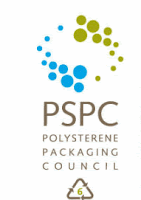- Polystyrene can be and is being recycled in Cape Town.
From the reading that I have done I thought that polystyrene was expensive and inefficient to recycle, mainly due to the problems associated with transporting such a light plastic, but polystyrene is actually collected, melted into ingots and recycled into picture frames, stationery, cornices, skirting boards, hangers and seedling trays. In Cape Town EPS Reclaim in Montague Gardens collects and smelts polystyrene. Find your nearest polystyrene drop off point.
- There is clearly a big demand for natural cleaning products.
I was amazed at how many different natural, organic and bio–degradable household cleaning products were on show. The demand and acceptance of these products is growing not just for environmental reasons, but also due to health concerns such as allergic reactions.
- Oxi-degradable plastics are creating headaches for recyclers.
I have written about oxi–degradable plastics before. It is important to realise that oxi–degradable plastic is very different from bio–degradable plastic. Companies like Green Home make bio–degradable plastic from plant sources (in their case bagasse, a byproduct of the sugar industry), while oxi–degradable plastics are normal plastic (like polyethylene) with the addition of a metal salt which causes them to break down over time. In South Africa oxi–degradable plastics have been used mainly for fruit and bread bags. The problem with these types of plastics is that they are indistinguishable from normal plastics and it is difficult to know how far the degradation process has progressed. Oxi–degradable bags pollute the recycling stream and result in a poor quality end product.
- Bio–degradable plastics require education and infrastructure.
Bio–degradable plastic products made from sustainable sources (such as bagasse, mentioned above) may provide a viable alternative to plastic in some cases. It is important that they are manufactured from sources other than food crops (plastic from corn is unsustainable). A problem that needs to be addressed (and is being addressed by manufacturers such as Green Home) is how to manage the waste from these products. Simply dumping bio–degradable plastic into a landfill is undesirable. Bio–degradable plastics will not degrade in a landfill, which means effective collection and composting needs to take place. Consumers can compost these packages at home, but without education it is unlikely that this will happen. Education, collection and composting infrastructure is an important aspect of bio–degradable plastic.
- Egg yolks contain colourant.
Pick 'n Pay is selling a new range of indigenous free range eggs, and one of the marketing points is "No yolk colourants." Yolk colourants? It turns out that chicken feed is often supplemented to increase its carotenoid content to obtain a more consistent colour yolk. The supplements used appear to be natural or "nature identical" such as lutein and canthaxanthin.


